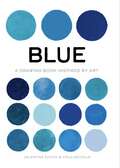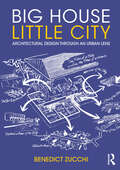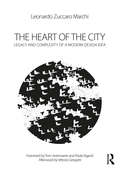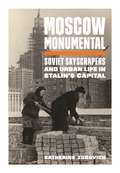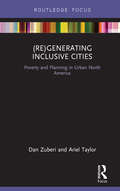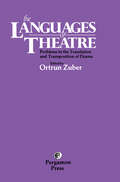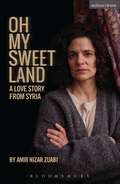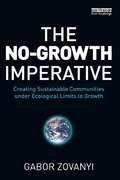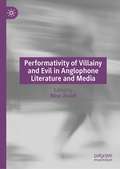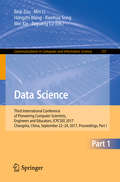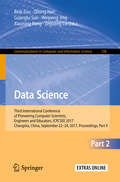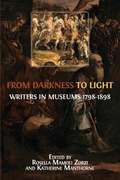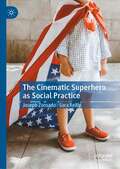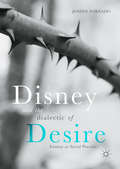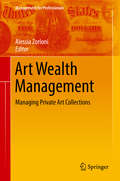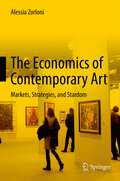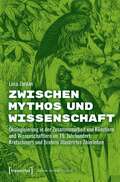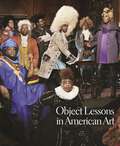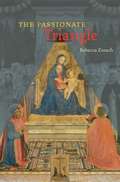- Table View
- List View
Blue: A Drawing Book Inspired by Art (True Color)
by Valentina ZucchiMany people crave a creative outlet, but more often than not, don't know where to start. In Blue, Valentina Zucchi and Viola Niccolai invite you to nurture your creativity and build your confidence by taking inspiration from modern works of art that celebrate blue, perhaps the best-loved colour of all.Discover the most important blues, ones that the all-time greatest painters have used in order to paint velvet, mountains, Madonnas, angels, skies and storms. Throughout the book, Valentina and Viola provide creative and fun prompts – many based on famous works of art – which will encourage you to draw or paint on the pages using various techniques. Packed with inspiration from the world's most celebrated artists, including the ancient Egyptians, John Constable, Pablo Picasso, Vincent van Gogh, Yves Klein and more, you will discover the many meanings of blue and just some of the innumerable stories that bring it to life.Blue is a short course in unlocking your creative self – perfect for budding artists of all ages who are keen to try out different artistic techniques and materials, and begin their artistic journey.
Big House Little City: Architectural Design Through an Urban Lens
by Benedict ZucchiCombining architectural and urban thinking in an unusual and engaging way, this book presents an integrated approach to architectural theory and design. Leon Battista Alberti’s assertion in his famous Renaissance treatise that ‘the city is like a big house, and the house is in turn like a little city’ forms the springboard for a series of reflections on architecture’s relationship with urbanism and how their once intimate symbiosis, unravelled by International Style Modernism, can be recovered. Explicit references to Alberti’s house-city phrase have been made by figures as diverse as the architects Louis Kahn, Aldo Van Eyck, Denys Lasdun and Niels Torp and novelist Italo Calvino. But, as the book shows, thinking of buildings as little cities provides a new lens through which to reappraise the contributions of many other architects, including Le Corbusier, Frank Lloyd Wright, Alvar Aalto, Eliel Saarinen, Bernard Rudofsky, Hans Scharoun, Leon Krier, Fumihiko Maki, Charles Correa and Team 10. In doing so, the author identifies common themes that form an unexpected bridgehead between the urban and architectural approaches of Antiquity, the Middle Ages, Renaissance and 20th century. The book explores buildings from across the globe, including lesser-known projects, such as Wright’s unbuilt house in Italy or Saarinen’s master plan for Cranbrook Academy, as well as more recent projects by Niels Torp, Behnisch Architekten, Sou Fujimoto, Peter Barber and WOHA. It concludes with practical case studies of residential, health, education and workplace projects from different countries, fulsomely illustrated with many drawings and photographs. These show how architectural design viewed through an urban lens provides a conceptual framework for breaking down the scale of large buildings and integrating them with their context. And crucially, these also show a very accessible way of explaining evolving designs to the intended users and eliciting their participation in the design process. The book offers a compelling approach to the design of projects at all scales, within an ecological perspective: the sense that big and small, cities and buildings must be approached holistically if we are to reverse the degradation and depletion of our habitat, both natural and man-made.
Big House Little City: Architectural Design Through an Urban Lens
by Benedict ZucchiCombining architectural and urban thinking in an unusual and engaging way, this book presents an integrated approach to architectural theory and design. Leon Battista Alberti’s assertion in his famous Renaissance treatise that ‘the city is like a big house, and the house is in turn like a little city’ forms the springboard for a series of reflections on architecture’s relationship with urbanism and how their once intimate symbiosis, unravelled by International Style Modernism, can be recovered. Explicit references to Alberti’s house-city phrase have been made by figures as diverse as the architects Louis Kahn, Aldo Van Eyck, Denys Lasdun and Niels Torp and novelist Italo Calvino. But, as the book shows, thinking of buildings as little cities provides a new lens through which to reappraise the contributions of many other architects, including Le Corbusier, Frank Lloyd Wright, Alvar Aalto, Eliel Saarinen, Bernard Rudofsky, Hans Scharoun, Leon Krier, Fumihiko Maki, Charles Correa and Team 10. In doing so, the author identifies common themes that form an unexpected bridgehead between the urban and architectural approaches of Antiquity, the Middle Ages, Renaissance and 20th century. The book explores buildings from across the globe, including lesser-known projects, such as Wright’s unbuilt house in Italy or Saarinen’s master plan for Cranbrook Academy, as well as more recent projects by Niels Torp, Behnisch Architekten, Sou Fujimoto, Peter Barber and WOHA. It concludes with practical case studies of residential, health, education and workplace projects from different countries, fulsomely illustrated with many drawings and photographs. These show how architectural design viewed through an urban lens provides a conceptual framework for breaking down the scale of large buildings and integrating them with their context. And crucially, these also show a very accessible way of explaining evolving designs to the intended users and eliciting their participation in the design process. The book offers a compelling approach to the design of projects at all scales, within an ecological perspective: the sense that big and small, cities and buildings must be approached holistically if we are to reverse the degradation and depletion of our habitat, both natural and man-made.
The Heart of the City: Legacy and Complexity of a Modern Design Idea
by Leonardo Zuccaro MarchiThe Heart of the City concept, which was introduced at CIAM 8 in 1951, has played an important role in architectural and urban debates. The Heart became the most important of the organic references used in the 1950s for defining a theory of urban form. This book focuses on both the historical and theoretical reinterpretation of this seminal concept. Divided into two main sections, both looking at differing ways in which the Heart has influenced more recent urban thinking, it illustrates the continuity and the complexities of the Heart of the City. In doing so, this book offers a new perspective on the significance of public space and shows how The Heart of the City still resonates closely with contemporary debates about centrality, identity and the design of public space. It would be of interest to architects, academics and students of urban design and planning.
The Heart of the City: Legacy and Complexity of a Modern Design Idea
by Leonardo Zuccaro MarchiThe Heart of the City concept, which was introduced at CIAM 8 in 1951, has played an important role in architectural and urban debates. The Heart became the most important of the organic references used in the 1950s for defining a theory of urban form. This book focuses on both the historical and theoretical reinterpretation of this seminal concept. Divided into two main sections, both looking at differing ways in which the Heart has influenced more recent urban thinking, it illustrates the continuity and the complexities of the Heart of the City. In doing so, this book offers a new perspective on the significance of public space and shows how The Heart of the City still resonates closely with contemporary debates about centrality, identity and the design of public space. It would be of interest to architects, academics and students of urban design and planning.
Moscow Monumental: Soviet Skyscrapers and Urban Life in Stalin's Capital
by Katherine ZubovichAn in-depth history of the Stalinist skyscraperIn the early years of the Cold War, the skyline of Moscow was forever transformed by a citywide skyscraper building project. As the steel girders of the monumental towers went up, the centuries-old metropolis was reinvented to embody the greatness of Stalinist society. Moscow Monumental explores how the quintessential architectural works of the late Stalin era fundamentally reshaped daily life in the Soviet capital.Drawing on a wealth of original archival research, Katherine Zubovich examines the decisions and actions of Soviet elites—from top leaders to master architects—and describes the experiences of ordinary Muscovites who found their lives uprooted by the ambitious skyscraper project. She shows how the Stalin-era quest for monumentalism was rooted in the Soviet Union's engagement with Western trends in architecture and planning, and how the skyscrapers required the creation of a vast and complex infrastructure. As laborers flooded into the city, authorities evicted and rehoused tens of thousands of city residents living on the plots selected for development. When completed in the mid-1950s, these seven ornate neoclassical buildings served as elite apartment complexes, luxury hotels, and ministry and university headquarters.Moscow Monumental tells a story that is both local and broadly transnational, taking readers from the streets of interwar Moscow and New York to the marble-clad halls of the bombastic postwar structures that continue to define the Russian capital today.
(Re)Generating Inclusive Cities: Poverty and Planning in Urban North America
by Dan Zuberi Ariel Judith TaylorAs suburban expansion declines, cities have become essential economic, cultural and social hubs of global connectivity. This book is about urban revitalization across North America, in cities including San Francisco, Toronto, Boston, Vancouver, New York and Seattle. Infrastructure projects including the High Line and Big Dig are explored alongside urban neighborhood creation and regeneration projects such as Hunters Point in San Francisco and Regent Park in Toronto. Today, these urban regeneration projects have evolved in the context of unprecedented neoliberal public policy and soaring real estate prices. Consequently, they make a complex contribution to urban inequality and poverty trends in many of these cities, including the suburbanization of immigrant settlement and rising inequality. (Re)Generating Inclusive Cities wrestles with challenging but important questions of urban planning, including who benefits and who loses with these urban regeneration schemes, and what policy tools can be used to mitigate harm? We propose a new way forward for understanding and promoting better urban design practices in order to build more socially just and inclusive cities and to ultimately improve the quality of urban life for all.
(Re)Generating Inclusive Cities: Poverty and Planning in Urban North America
by Dan Zuberi Ariel Judith TaylorAs suburban expansion declines, cities have become essential economic, cultural and social hubs of global connectivity. This book is about urban revitalization across North America, in cities including San Francisco, Toronto, Boston, Vancouver, New York and Seattle. Infrastructure projects including the High Line and Big Dig are explored alongside urban neighborhood creation and regeneration projects such as Hunters Point in San Francisco and Regent Park in Toronto. Today, these urban regeneration projects have evolved in the context of unprecedented neoliberal public policy and soaring real estate prices. Consequently, they make a complex contribution to urban inequality and poverty trends in many of these cities, including the suburbanization of immigrant settlement and rising inequality. (Re)Generating Inclusive Cities wrestles with challenging but important questions of urban planning, including who benefits and who loses with these urban regeneration schemes, and what policy tools can be used to mitigate harm? We propose a new way forward for understanding and promoting better urban design practices in order to build more socially just and inclusive cities and to ultimately improve the quality of urban life for all.
The Languages of Theatre: Problems in the Translation and Transposition of Drama
by O. ZuberThis book focuses on the various problems in the verbal and nonverbal translation and tranposition of drama from one language and cultural background into another and from the text on to the stage. It covers a range of previously unpublished essays specifically written on translation problems unique to drama, by playwrights and literary translators as well as theorists, scholars and teachers of drama and translation studies
Oh My Sweet Land (Modern Plays)
by Amir Nizar ZuabiThey call it a civil war, but there is nothing civil in this. Nothing civil at all. They came from Damascus, from Halab, from Banias where the bombs fall day and night and the wounded children look like sleeping angels. Now they live in camps and abandoned buildings in Lebanon or Jordan. Now Syria is just a distant memory, a home forever lost.This urgent and extraordinary play explores the crisis in Syria through the stories of its two million refugees. Oh My Sweet Land received its UK premiere at the Young Vic Theatre, London, on 9 April 2014.
Oh My Sweet Land (Modern Plays)
by Amir Nizar ZuabiThey call it a civil war, but there is nothing civil in this. Nothing civil at all. They came from Damascus, from Halab, from Banias where the bombs fall day and night and the wounded children look like sleeping angels. Now they live in camps and abandoned buildings in Lebanon or Jordan. Now Syria is just a distant memory, a home forever lost.This urgent and extraordinary play explores the crisis in Syria through the stories of its two million refugees. Oh My Sweet Land received its UK premiere at the Young Vic Theatre, London, on 9 April 2014.
The No-Growth Imperative: Creating Sustainable Communities under Ecological Limits to Growth
by Gabor ZovanyiMore than two decades of mounting evidence confirms that the existing scale of the human enterprise has surpassed global ecological limits to growth. Based on such limits, The No-Growth Imperative discounts current efforts to maintain growth through eco-efficiency initiatives and smart-growth programs, and argues that growth is inherently unsustainable and that the true nature of the challenge confronting us now is one of replacing the current growth imperative with a no-growth imperative. Gabor Zovanyi asserts that anything less than stopping growth would merely slow today’s dramatic degradation and destruction of ecosystems and their critical life-support services. Zovanyi makes the case that local communities must take action to stop their unsustainable demographic, economic, and urban increases, as an essential prerequisite to the realization of sustainable states. The book presents rationales and legally defensible strategies for stopping growth in local jurisdictions, and portrays the viability of no-growth communities by outlining their likely economic, social, political, and physical features. It will serve as a resource for those interested in shifting the focus of planning from growth accommodation to the creation of stable, sustainable communities. While conceding the challenges associated with transforming communities into no-growth entities, Zovanyi concludes by presenting evidence that suggests that prospects for realizing states of no growth are greater than might be assumed.
The No-Growth Imperative: Creating Sustainable Communities under Ecological Limits to Growth
by Gabor ZovanyiMore than two decades of mounting evidence confirms that the existing scale of the human enterprise has surpassed global ecological limits to growth. Based on such limits, The No-Growth Imperative discounts current efforts to maintain growth through eco-efficiency initiatives and smart-growth programs, and argues that growth is inherently unsustainable and that the true nature of the challenge confronting us now is one of replacing the current growth imperative with a no-growth imperative. Gabor Zovanyi asserts that anything less than stopping growth would merely slow today’s dramatic degradation and destruction of ecosystems and their critical life-support services. Zovanyi makes the case that local communities must take action to stop their unsustainable demographic, economic, and urban increases, as an essential prerequisite to the realization of sustainable states. The book presents rationales and legally defensible strategies for stopping growth in local jurisdictions, and portrays the viability of no-growth communities by outlining their likely economic, social, political, and physical features. It will serve as a resource for those interested in shifting the focus of planning from growth accommodation to the creation of stable, sustainable communities. While conceding the challenges associated with transforming communities into no-growth entities, Zovanyi concludes by presenting evidence that suggests that prospects for realizing states of no growth are greater than might be assumed.
Performativity of Villainy and Evil in Anglophone Literature and Media
by Nizar ZouidiPerformativity of Villainy and Evil in Anglophone Literature and Media studies the performative nature of evil characters, acts and emotions across intersecting genres, disciplines and historical eras. This collection brings together scholars and artists with different institutional standings, cultural backgrounds and (inter)disciplinary interests with the aim of energizing the ongoing discussion of the generic and thematic issues related to the representation of villainy and evil in literature and media. The volume covers medieval literature to contemporary literature and also examines important aspects of evil in literature such as social and political identity, the gothic and systemic evil practices. In addition to literature, the book considers examples of villainy in film, TV and media, revealing that performance, performative control and maneuverability are the common characteristics of villains across the different literary and filmic genres and eras studied in the volume.
Data Science: Third International Conference of Pioneering Computer Scientists, Engineers and Educators, ICPCSEE 2017, Changsha, China, September 22–24, 2017, Proceedings, Part I (Communications in Computer and Information Science #727)
by Beiji Zou Min Li Hongzhi Wang Xianhua Song Wei Xie Zeguang LuThis two volume set (CCIS 727 and 728) constitutes the refereed proceedings of the Third International Conference of Pioneering Computer Scientists, Engineers and Educators, ICPCSEE 2017 (originally ICYCSEE) held in Changsha, China, in September 2017. The 112 revised full papers presented in these two volumes were carefully reviewed and selected from 987 submissions. The papers cover a wide range of topics related to Basic Theory and Techniques for Data Science including Mathematical Issues in Data Science, Computational Theory for Data Science, Big Data Management and Applications, Data Quality and Data Preparation, Evaluation and Measurement in Data Science, Data Visualization, Big Data Mining and Knowledge Management, Infrastructure for Data Science, Machine Learning for Data Science, Data Security and Privacy, Applications of Data Science, Case Study of Data Science, Multimedia Data Management and Analysis, Data-driven Scientific Research, Data-driven Bioinformatics, Data-driven Healthcare, Data-driven Management, Data-driven eGovernment, Data-driven Smart City/Planet, Data Marketing and Economics, Social Media and Recommendation Systems, Data-driven Security, Data-driven Business Model Innovation, Social and/or organizational impacts of Data Science.
Data Science: Third International Conference of Pioneering Computer Scientists, Engineers and Educators, ICPCSEE 2017, Changsha, China, September 22–24, 2017, Proceedings, Part II (Communications in Computer and Information Science #728)
by Beiji Zou Qilong Han Guanglu Sun Weipeng Jing Xiaoning Peng Zeguang LuThis two volume set (CCIS 727 and 728) constitutes the refereed proceedings of the Third International Conference of Pioneering Computer Scientists, Engineers and Educators, ICPCSEE 2017 (originally ICYCSEE) held in Changsha, China, in September 2017. The 112 revised full papers presented in these two volumes were carefully reviewed and selected from 987 submissions. The papers cover a wide range of topics related to Basic Theory and Techniques for Data Science including Mathematical Issues in Data Science, Computational Theory for Data Science, Big Data Management and Applications, Data Quality and Data Preparation, Evaluation and Measurement in Data Science, Data Visualization, Big Data Mining and Knowledge Management, Infrastructure for Data Science, Machine Learning for Data Science, Data Security and Privacy, Applications of Data Science, Case Study of Data Science, Multimedia Data Management and Analysis, Data-driven Scientific Research, Data-driven Bioinformatics, Data-driven Healthcare, Data-driven Management, Data-driven eGovernment, Data-driven Smart City/Planet, Data Marketing and Economics, Social Media and Recommendation Systems, Data-driven Security, Data-driven Business Model Innovation, Social and/or organizational impacts of Data Science.
From Darkness to Light: Writers in Museums 1798–1898 (PDF)
by Rosella Mamoli Zorzi Katherine ManthorneFrom Darkness to Light explores from a variety of angles the subject of museum lighting in exhibition spaces in America, Japan, and Western Europe throughout the nineteenth and twentieth centuries. Written by an array of international experts, these collected essays gather perspectives from a diverse range of cultural sensibilities. From sensitive discussions of Tintoretto’s unique approach to the play of light and darkness as exhibited in the Scuola Grande di San Rocco in Venice, to the development of museum lighting as part of Japanese artistic self-fashioning, via the story of an epic American painting on tour, museum illumination in the work of Henry James, and lighting alterations at Chatsworth (to name only a few topics) this book is a treasure trove of illuminating contributions. The collection is at once a refreshing insight for the enthusiastic museum-goer, who is brought to an awareness of the exhibit in its immediate environment, and a wide-ranging scholarly compendium for the professional who seeks to proceed in their academic or curatorial work with a more enlightened sense of the lighted space.
The Cinematic Superhero as Social Practice
by Joseph Zornado Sara ReillyThis book analyzes the cinematic superhero as social practice. The study’s critical context brings together psychoanalysis and restorative and reflective nostalgia as a way of understanding the ideological function of superhero fantasy. It explores the origins of cinematic superhero fantasy from antecedents in myth and religion, to twentieth-century comic book, to the cinematic breakthrough with Superman (1978). The authors then focus on Spider-Man as reflective response to Superman’s restorative nostalgia, and read MCU’s overarching narrative from Iron Man to End Game in terms of the concurrent social, political, and environmental conditions as a world in crisis. Zornado and Reilly take up Wonder Woman and Black Panther as self-conscious attempts to reflect on gender and race in restorative superhero fantasy, and explore Christopher Nolan’s Dark Knight trilogy as a meditation on the need for authoritarian fascism. The book concludes with Logan, Wonder Woman 1984, and Amazon Prime’s The Boys as distinctly reflective fantasy narratives critical of the superhero fantasy phenomenon.
Disney and the Dialectic of Desire
by Joseph ZornadoThis book analyzes Walt Disney's impact on entertainment, new media, and consumer culture in terms of a materialist, psychoanalytic approach to fantasy. The study opens with a taxonomy of narrative fantasy along with a discussion of fantasy as a key concept within psychoanalytic discourse. Zornado reads Disney's full-length animated features of the "golden era" as symbolic responses to cultural and personal catastrophe, and presents Disneyland as a monument to Disney fantasy and one man's singular, perverse desire. What follows after is a discussion of the "second golden age" of Disney and the rise of Pixar Animation as neoliberal nostalgia in crisis. The study ends with a reading of George Lucas as latter-day Disney and Star Wars as Disney fantasy. This study should appeal to film and media studies college undergraduates, graduates students and scholars interested in Disney.
Disney and the Dialectic of Desire: Fantasy as Social Practice (PDF)
by Joseph ZornadoThis book analyzes Walt Disney’s impact on entertainment, new media, and consumer culture in terms of a materialist, psychoanalytic approach to fantasy. The study opens with a taxonomy of narrative fantasy along with a discussion of fantasy as a key concept within psychoanalytic discourse. Zornado reads Disney’s full-length animated features of the “golden era” as symbolic responses to cultural and personal catastrophe, and presents Disneyland as a monument to Disney fantasy and one man’s singular, perverse desire. What follows after is a discussion of the “second golden age” of Disney and the rise of Pixar Animation as neoliberal nostalgia in crisis. The study ends with a reading of George Lucas as latter-day Disney and Star Wars as Disney fantasy. This study should appeal to film and media studies college undergraduates, graduates students and scholars interested in Disney.
Art Wealth Management: Managing Private Art Collections (Management for Professionals #0)
by Alessia ZorloniThis book offers an overview of how to manage private art collections, providing essential insights on art wealth management, art investment, art governance, and succession planning for art assets. It offers practical recommendations on sound art collection governance, but also examines the background of art markets and price building, including the influence of fashion and trends. Throughout history, art patronage has played an important role in the wealth of ultra-high-net-worth families and led to private museums funded by philanthropist collectors in order to celebrate their own tastes and leave a lasting legacy. Today, as a result of the growth of art investing by a new generation of wealthy collectors, not only artists but also wealthy families, sophisticated investors and their close advisors now face a more complex set of financial and managerial needs. As such, the contributions in this book will be of interest to collecting families, family offices, and professional advisors seeking to integrate art into their overall wealth management strategy, and to scholars in the fields of cultural economics, art dealers, curators, and art lovers.
The Economics of Contemporary Art: Markets, Strategies and Stardom
by Alessia ZorloniThe book examines the contemporary art system with a broad and systematic approach, through the application of models of microeconomics and industrial organizations. By breaking down the traditional barriers between different academic disciplines such as art and economics, this book offers a unique opportunity to grasp the complexities of the contemporary art world and provides the tools to conduct a structural analysis of that market. The result is an in-depth analysis of the contemporary art market from an interdisciplinary perspective. While it is not a textbook in the strictest sense, the book offers a concise and effective overview of all actors in the art system, and provides supporting data and valuable information, both conceptual and practical. It is therefore a text that can be used by students wishing to better understand the complex dynamics that govern the contemporary art market, but also by cultural managers, collectors, potential art investors or simply art lovers who need a quick reference.
Zwischen Mythos und Wissenschaft: Ökologisierung in der Zusammenarbeit von Künstlern und Wissenschaftlern im 19. Jahrhundert: Kretschmers und Brehms Illustrirtes Thierleben (Human-Animal Studies #22)
by Luca ZordanDurch die Vorstellung naturwissenschaftlicher Bilder, welche aus Kontexten der künstlerisch-wissenschaftlichen Kooperation stammen, skizziert Luca Zordan Symptome einer sich im 19. Jahrhundert entfaltenden Ökologisierung. Der Fokus richtet sich dabei auf den Beitrag von Tierillustrationen in Publikationen aus der Zeit der Popularisierung des Wissens zur Entwicklung hybrider Ansichten, welche Phänomene einer Verwandtschaft von Mensch und Tier ausdrücken. Exemplarisch dienen zu dieser Analyse Holzstiche des Künstlers Robert Kretschmer in Alfred Brehms Illustrirtes Thierleben.
Object Lessons in American Art
by Rebecca Zorach Horace D. Ballard Kirsten Pai Buick Ellery E. Foutch Karl Kusserow Jeffrey Richmond-MollA rich exploration of American artworks that reframes them within current debates on race, gender, the environment, and moreObject Lessons in American Art explores a diverse gathering of Euro-American, Native American, and African American art from a range of contemporary perspectives, illustrating how innovative analysis of historical art can inform, enhance, and afford new relevance to artifacts of the American past. The book is grounded in the understanding that the meanings of objects change over time, in different contexts, and as a consequence of the ways in which they are considered. Inspired by the concept of the object lesson, the study of a material thing or group of things in juxtaposition to convey embodied and underlying ideas, Object Lessons in American Art examines a broad range of art from Princeton University’s venerable collections as well as contemporary works that imaginatively appropriate and reframe their subjects and style, situating them within current social, cultural, and artistic debates on race, gender, the environment, and more.Distributed for the Princeton University Art Museum
The Passionate Triangle
by Rebecca ZorachTriangles abounded in the intellectual culture of early modern Europe—the Christian Trinity was often mapped as a triangle, for instance, and perspective, a characteristic artistic technique, is based on a triangular theory of vision. Renaissance artists, for their part, often used shapes and lines to arrange figures into a triangle on the surface of a painting—a practice modern scholars call triangular composition. But is there secret meaning in the triangular arrangements artists used, or just a pleasing symmetry? What do triangles really tell us about the European Renaissance and its most beguiling works of art? In this book, Rebecca Zorach takes us on a lively hunt for the triangle’s embedded significance. From the leisure pursuits of Egyptian priests to Jacopo Tintoretto’s love triangles, Zorach explores how the visual and mathematical properties of triangles allowed them to express new ideas and to inspire surprisingly intense passions. Examining prints and paintings as well as literary, scientific, and philosophical texts, The Passionate Triangle opens up an array of new ideas, presenting unexpected stories of the irrational, passionate, melancholic, and often erotic potential of mathematical thinking before the Scientific Revolution.
